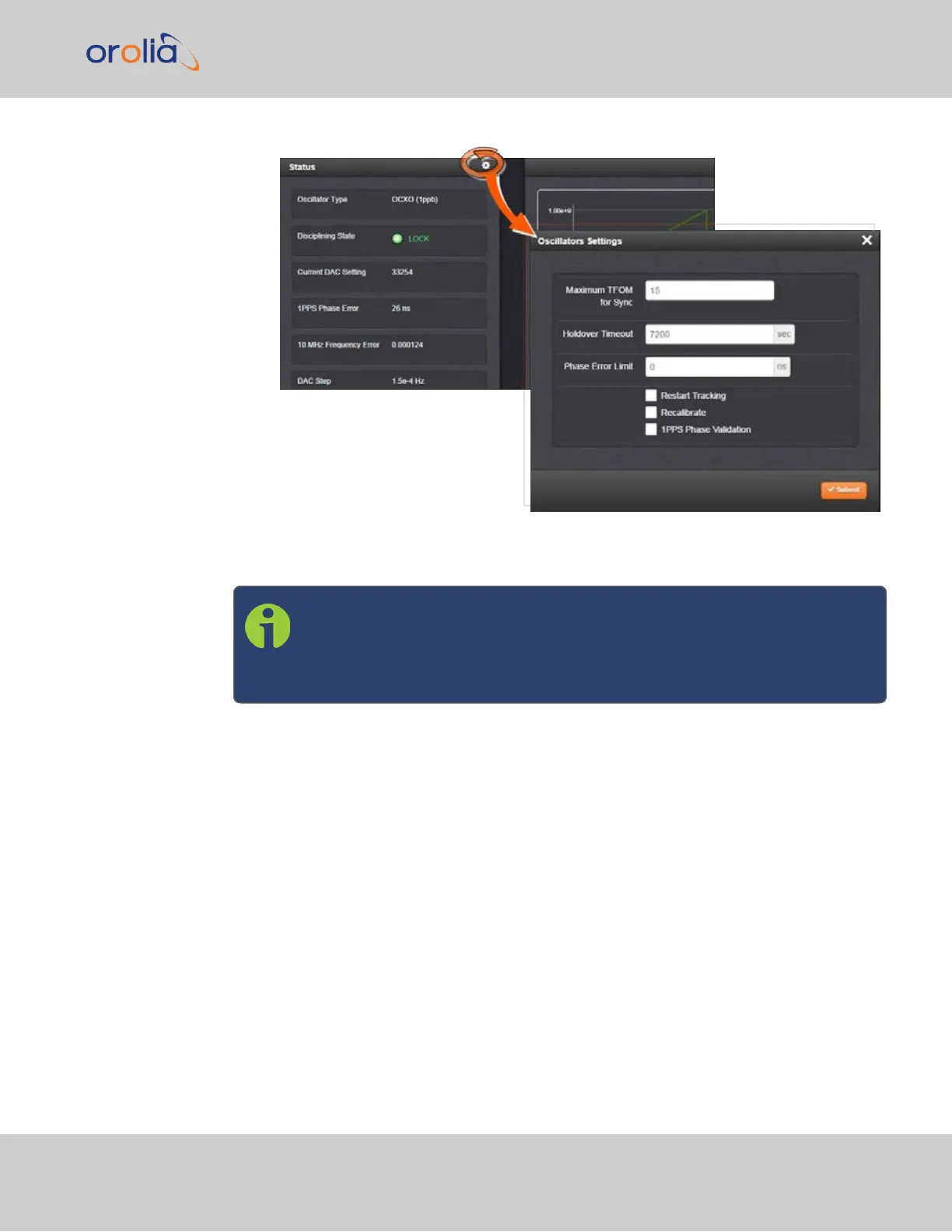For more information on the TFOM value and Phase Error Limit, see "Configuring
the Oscillator" on page198.
Note: Changes made to the Holdover Timeout always take effect imme-
diately. If VersaSync is in Holdover and the Holdover timeout is changed to
a value that is less than the current time period that VersaSync has been in
Holdover Mode, the unit will immediately declare loss of synchronization.
What is the recommended setting for the Holdover Timeout period?
The factory default Holdover period is 2 hours (7200 seconds) . The value can be
increased to up to 5 years. During this time period, VersaSync will be useable by its NTP cli-
ents (or other consumers) after GNSS reception has been lost.
The length of time is really based on the type of oscillator installed in a unit, and what the
typical accuracy requirements are for the NTP clients. The longer it can run in Holdover
mode before it expires, the longer it can continue being a central time source for all of its cli-
ents. But the longer VersaSync runs in Holdover, the larger the offset to true UTC time will
become, because the undisciplined oscillator will drift over time:
The better the type of oscillator installed, the more stable it is while in Holdover and there-
fore, the less its time will drift away from true UTC time. This results in more accurate tim-
ing, over extended durations upon the loss of GPS input. For instance, a Rubidium
oscillator will maintain significantly better time over a longer Holdover duration than a
TCXO oscillator (TCXOs are considerably less stable than a Rb oscillator).
3.3 Managing References
CHAPTER 3 • VersaSync User Manual Rev. 7.0
195
